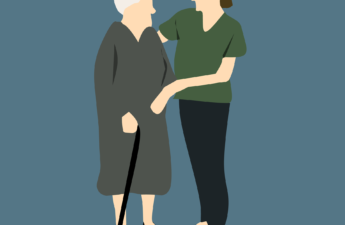
Medicaid ‘Buy-In’ Could Be a New Health Care Option for the Uninsured
Stateline
Even as calls for “Medicare for All” grow louder among Democrats in Washington, D.C., at least 10 states are exploring whether to allow residents to pay premiums to “buy in” to Medicaid, the federal-state health care program for the poor.
Currently, Medicaid recipients pay for their coverage in only a handful of states, and the buy-in plans that states are considering might not offer the full range of benefits available to traditional beneficiaries.
But advocates say the policies might be an appealing option for people hard-pressed to pay for plans on the health care exchanges, and spur competition that could lower prices for everybody.
The concept of enrolling all Americans in Medicare, the federal health insurance program for the elderly, is probably a nonstarter in politically polarized Washington — at least for now. So, states have started looking at other ways to provide health care to more people at more affordable prices.
“We think 2019 is going to be the year of Medicaid buy-in,” said Allison O’Toole, senior director of state affairs for United States of Care, a nonpartisan group that promotes affordable health care for all. She cited the long-held maxim that states, not the federal government, are the “laboratories of democracy” where innovative solutions most often arise.
Nevada’s legislature passed a Medicaid buy-in program in 2017, only to have its then-Republican governor, Brian Sandoval, veto it, saying the state needed more time to study the plan. Legislative supporters say they are planning to file a new bill shortly and are optimistic about passage. The state now has a Democratic governor.
In New Mexico, the legislature last year ordered a study of buy-in options. Analysts are estimating the cost of such a program, after which legislative supporters said they expect to draft a bill. Both houses have Democratic majorities, and the state also has a new Democratic governor who has declared public support for the idea.
Studies of a buy-in option also are ongoing in California, Delaware, Oregon and Washington. And newly elected governors in Connecticut, Illinois, Minnesota and Wisconsin have pledged support for Medicaid buy-in. A poll in Minnesota commissioned by MPR News and the Minneapolis Star Tribune before the November midterms showed 70 percent of likely voters support allowing people to buy into public options, such as Medicaid or Medicare.
And, a soon-to-be released survey commissioned by United States of Care and conducted by the Harris Poll in November found 78 percent of registered voters across the country saying that a Medicaid buy-in plan should be a priority for their state’s lawmakers.
In some states, it already is.
“Things aren’t happening at the federal level, so states are saying, ‘Let’s see what we can do,’” said Heather Howard, a lecturer on health policy at Princeton University’s Woodrow Wilson School of Public and International Affairs. “History tells us good ideas bubble up from the states.”
Just this week, Washington state Gov. Jay Inslee proposed a state-run health care system akin to “Medicare for all.” Inslee, a Democrat, said Cascade Care would provide coverage across the state by contracting with one or more insurers, and would be available to anyone seeking coverage as an individual. Patients would spend no more than 10 percent of their income on premiums.
In California, incoming Gov. Gavin Newsom, also a Democrat, this week proposed increased subsidies for middle-class families who can’t afford health insurance and a requirement that all residents be covered. Newsom also wants to expand the state’s Medicaid program to cover young immigrant adults in the United States illegally.
In New York City, Democratic Mayor Bill de Blasio pledged to provide coverage to 600,000 uninsured New Yorkers. Under NYC Care, uninsured New Yorkers will be able to call a central phone number to get an insurance card and be assigned a doctor. Depending on their income, some residents would have to pay fees on a sliding scale.
But some lawmakers have concerns about Medicaid buy-in plans.
Minnesota Senate Majority Leader Paul Gazelka, a Republican, said he does not regard Medicaid buy-in as “a viable option” in his state.
“Local hospitals and providers will go out of business because they won’t have the money they need” because of the low Medicaid reimbursement rates to medical providers. He said proponents haven’t identified how they would raise the money to support such a plan.
Many Options
As states wrestle with the task of trying to create Medicaid buy-in plans, they confront a myriad of options, which explains why many of them have launched studies.
Each state has numerous questions to answer: Who would be eligible to buy into the Medicaid plan? Would it be open to all comers or perhaps a more targeted population, such as those below a certain income level? What benefits would be offered — the same as those offered to other Medicaid beneficiaries, fewer or more? Would the buy-in plans be offered on the current Affordable Care Act exchanges, in which case, unlike current Medicaid plans, they would have to be ACA-compliant?
Other questions abound. How much would premiums, deductibles and other cost-sharing fees be? And who would administer the buy-in plans — existing Medicaid agencies, some other state agency or a new entity?
Looming over those questions is how the Trump administration would view Medicaid buy-in plans, which might require federal approval, depending on how states craft them.
Securing that permission could have a far-reaching impact on who might benefit from a buy-in plan. The plans wouldn’t be eligible for the federal matching funds provided in traditional Medicaid. But with Trump administration approval, low-income consumers (those with incomes between one and four times the poverty level) who are eligible for federal subsidies on health insurance exchanges could use that money to pay premiums for Medicaid buy-in plans.
Another significant political challenge could come from the insurance industry, which is unlikely to welcome new, government-sponsored competition intended to offer consumers lower prices.
“Proposals such as Medicaid buy-ins, while well-intentioned, often lack important policy and programmatic details,” Cathryn Donaldson, a spokeswoman for America’s Health Insurance Plans, the lobbying arm of the health insurance industry, wrote in an email to Stateline. Instead, she wrote, “let’s build on proven solutions that work.”
Medicaid buy-in plans theoretically could provide health coverage more cheaply than commercial plans for several reasons: They aren’t profit-making enterprises, they would benefit from Medicaid’s economies of scale, and they likely would reimburse providers at a lower rate than either commercial insurers or Medicare do.
John Holahan, a health policy expert at the Urban Institute, said Medicaid buy-in mainly makes sense in states with little competition on their health insurance exchanges and where premiums are high. That describes most of the 14 that have refused to expand their Medicaid plans as originally mandated by the Affordable Care Act.
“I doubt that states with an ideological opposition to expansion would have any more interest in this,” Holahan said.
Oregon Rep. Cedric Hayden, the vice-chairman of the House Committee on Health Care, said he and his Republican colleagues would be willing to have an “open, interesting conversation” about a Medicaid buy-in plan. Oregon, he said, has a unique history of bipartisanship when it comes to health care legislation.
“Depending on how that would be set up, it’s certainly not a subject that I’m adamantly opposed,” he said. “But I’d like to see the structure.”
Spurring Competition
Mike Sprinkle, a Democratic assemblyman in Nevada, said last week he is preparing to introduce a bill this month on Medicaid buy-in. Sprinkle appears to be the first state legislator in the country to introduce Medicaid buy-in legislation, which he first did in 2017.
The legislation passed in the Democratic-controlled legislature but was vetoed by Sandoval, who was succeeded this week by a Democrat, Steve Sisolak. The new governor has not indicated whether he supports Medicaid buy-in but did run on a platform of securing affordable health care for all.
While premium prices did not rise dramatically for Nevadans on the health exchange this year, Sprinkle said they remain too high for many in the state, particularly in rural areas where consumers only have one insurance carrier.
Sprinkle said his bill would open Medicaid to anyone whose income is above 400 percent of poverty ($83,120 a year for a family of three). Federal subsidies would not be available to them. He said the buy-in plan would match benefits offered to those in Nevada’s existing Medicaid plan.
“Because it wouldn’t be profit-driven, it would provide a level of stability that the market doesn’t have now. People want to know their health insurance is going to be stable for the next three, four, five years so they can plan for it,” he said. “This would provide that.”
In New Mexico, the impetus for a buy-in program is to cut down on the number of residents still uninsured, which stood at about 186,000 in 2017. “It all starts from the idea that no New Mexican should go without health care because they can’t afford it,” said Abuko Estrada, a health policy expert at the New Mexico Center on Law and Poverty, one of the groups that has promoted a buy-in plan.
Last year, the legislature called for a study of the idea. A consulting company evaluated four types of buy-in plans, with a range of targeted populations and benefit packages, and whether federal approval would be required.
In the end, the consultants recommended that the state pursue the least ambitious choice, one with the smallest targeted population and that would not require federal approval. “They said, ‘Let’s be realistic; you’re not going to get a waiver from the Trump administration,’” said State Sen. Gerald Ortiz y Pino, a Democratic backer of Medicaid buy-in.
Now being analyzed for costs by Manatt Health, a consulting firm, the chosen option would make the buy-in available to those earning more than 400 percent of poverty and therefore not eligible for federal insurance subsidies. The benefits would be like those offered under traditional Medicaid. Although enrollees would pay premiums and other cost-sharing fees, the plan envisions the state giving financial aid to residents at the lower end of the eligibility range.
Ortiz y Pino said the plan would expand coverage by 65,000 to 75,000 people. He said he expects it eventually would cost the state $35 to $45 million a year, although he hopes the plan would be expanded in later years, perhaps with a friendlier administration in Washington.
“If we can get it on the books, it’ll become the foundation for even broader efforts in the future,” he said.
Matt Vasilogambros contributed to this report.


